The Art and Business of Selling Handmade Quilts on Etsy

In the world of handmade goods, there’s something undeniably special about quilts. Quilting is not just a craft; it’s a rich tapestry of history, culture, and personal stories woven together. For artists and crafters, quilts represent hours of meticulous work, selections of the perfect pieces of fabric, and the joy of creating something truly unique. It’s this distinctiveness that makes handmade quilts a sought-after item on platforms like Etsy.
If you’re an artist selling your art or someone deeply entrenched in the handmade business, you might already recognize the potential Etsy offers. As one of the best places to showcase and sell handmade items, Etsy provides a platform where creativity meets commerce.
Sellers can tap into a global customer base, eager to purchase unique items that big box stores can’t replicate. Etsy’s vibrant community not only supports sellers but also offers insights, tips, and avenues for growth.
But why quilts? The legacy of quilting, especially traditions like the gee’s bend quilters, speaks volumes about the craft’s significance. These quilts tell stories, often passed down through generations, making them more than just pieces of fabric sewn together. They’re memories, traditions, and expressions of art.
Selling on Etsy, however, is not just about listing an item and waiting for it to sell. It involves understanding your target market, optimizing your online shop for search engines, engaging with potential customers on social media, and offering impeccable customer service.
And while quilts might be traditional, the methods of selling them have embraced the digital age. Leveraging tools like Etsy ads, conducting keyword research, and participating in online platforms can make a significant difference in sales. As this guide suggests, understanding the nuances of the platform and the preferences of its audience is crucial.
If you’re an Etsy seller, someone who frequents craft fairs, or an artist looking to diversify your income streams, diving into the world of selling quilts on Etsy might be your next big venture. As we unravel this guide, we’ll delve deeper into the intricacies of turning your passion for quilting into a thriving online business.
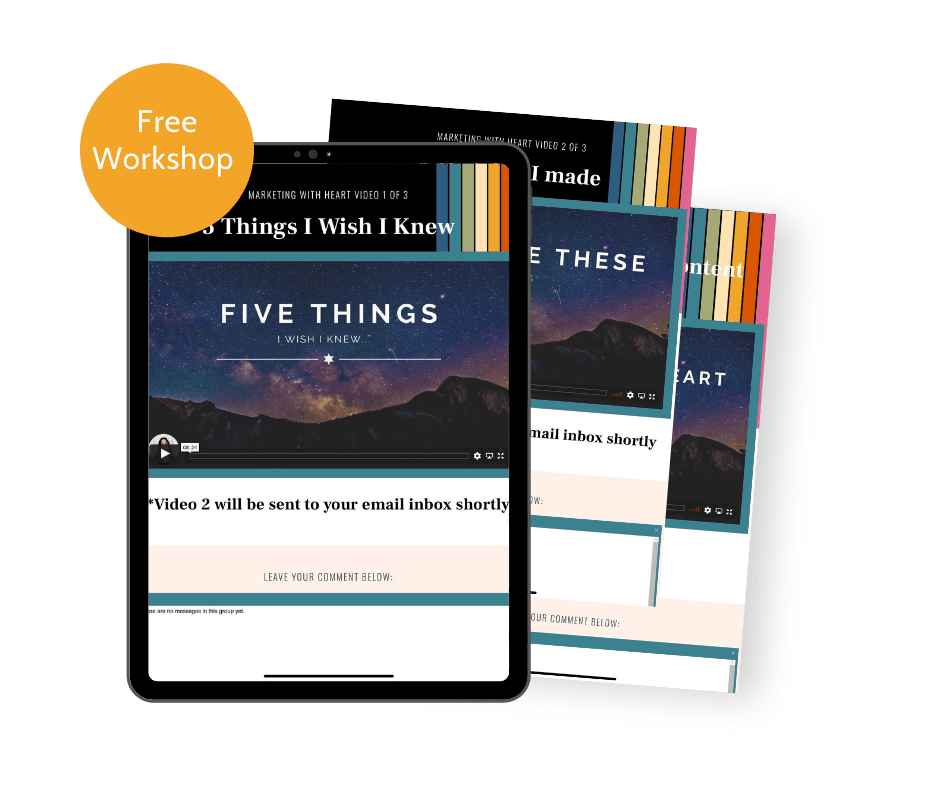
Finally! A Proven Way To Actually Grow Your Audience Of True Fans Without Making Social Media A Full Time Job
Understanding Your Product: The Magic of Handmade Quilts
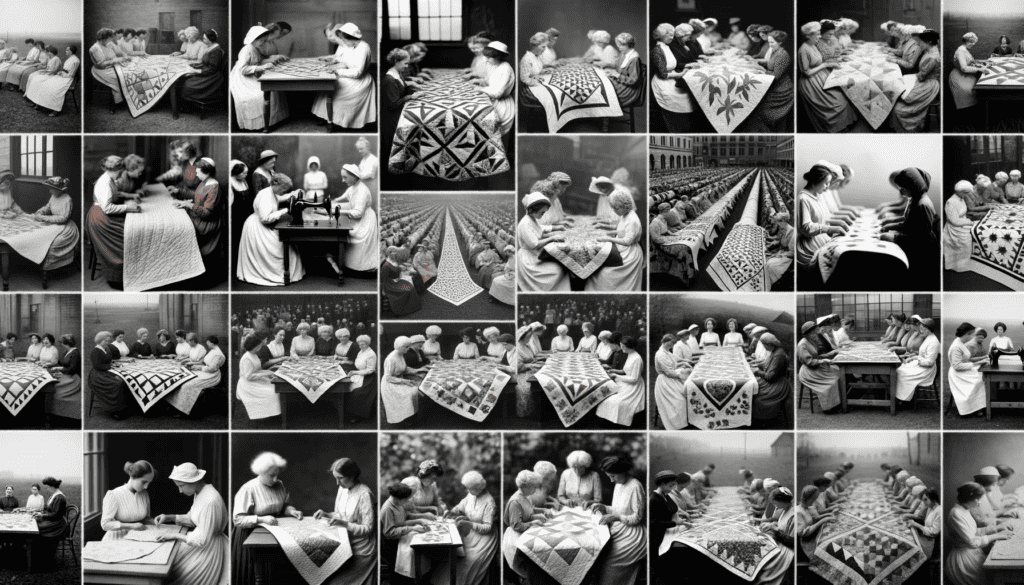
The Legacy of Handmade Quilts
Quilting is a timeless craft, deeply rooted in history and culture. For centuries, quilters have been stitching stories, traditions, and emotions into their creations. Among the most renowned in the quilting community are the gee’s bend quilters. Originating from a remote, rural community in Alabama, these artisans transformed the hardships and stories of their lives into vibrant, geometric masterpieces.
Their quilts, which initially emerged out of necessity, soon became an emblem of resilience, creativity, and cultural identity. What’s particularly noteworthy about the gee’s bend quilters and similar traditionalists is their adherence to age-old methods, emphasizing the authenticity and soul of each quilt.
In today’s marketplace, where mass-produced goods often overshadow artisanal creations, such authentic narratives wrapped in fabric hold immense value.
Why Handmade Quilts Stand Out
In an age of automation and mass production, handmade items, especially quilts, have a unique charm that sets them apart. Think of a quilt as a canvas where every stitch, color, and pattern choice tells a story. Unlike quilts churned out by big box stores, handmade quilts embody the personality, passion, and vision of the quilter.
Every handmade quilt is a labor of love, hours of meticulous work, and an embodiment of creativity. It’s this personal touch, the hours spent selecting the perfect pieces of fabric, and the emotions sewn into every quilt that make them stand out. Buyers aren’t just purchasing a piece of fabric; they’re investing in a piece of the artist, a story, and a legacy.
Selecting Your Niche
Just as painters have genres, quilters have niches. With a plethora of styles and types to explore, it’s crucial to find a niche that not only resonates with your passion but also aligns with the preferences of your target market. For instance, baby quilts have witnessed a surge in popularity, becoming a cherished gift for new parents.
They’re not just a cozy wrap for the baby but a keepsake to be treasured for years. Similarly, table runners add a touch of elegance to dining spaces, and their demand peaks during festive seasons. On the other hand, simple quilts, with minimalistic designs, appeal to a segment seeking understated elegance.
And then there are custom quilts, tailored to individual preferences, narrating personalized stories. Understanding these niches and aligning your crafting skills with market demand can be the key to carving a successful space for yourself in the quilt-selling domain on Etsy.
Setting Up Your Etsy Shop
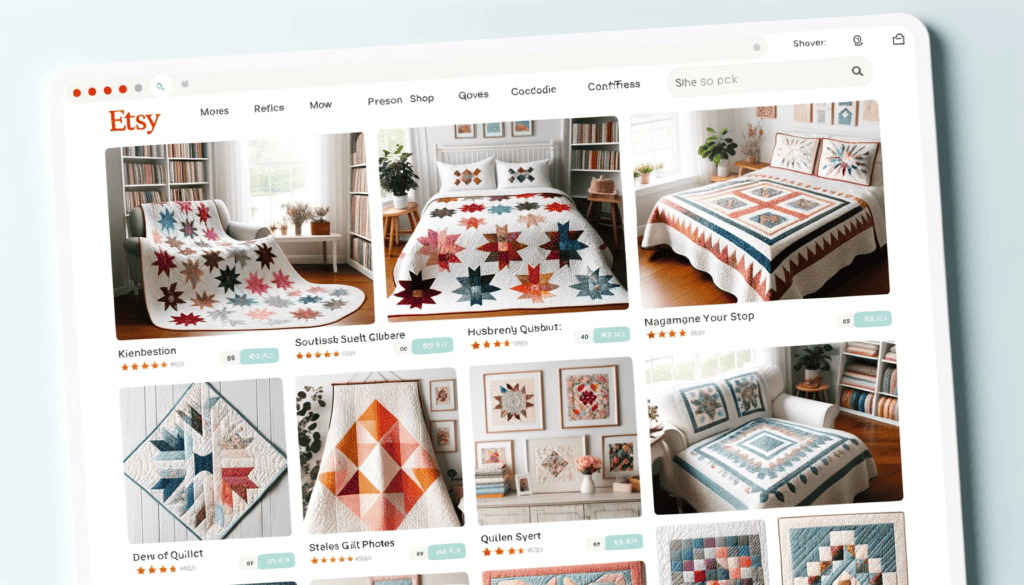
Essentials for Your Online Shop
Embarking on your Etsy journey requires more than just a passion for quilting. It’s about presenting your craft in a manner that captivates potential buyers. First and foremost, quality photographs are pivotal. Your photos should capture the intricate details, vibrant colors, and the overall aesthetics of your quilts.
Remember, in the online realm, images often make the first impression. Complementing these images, detailed product descriptions are crucial. Buyers should feel the texture, understand the size, and know the story behind each quilt just by reading its description.
Lastly, to ensure your shop stands out in the vast sea of Etsy sellers, search engine optimization techniques are your best ally. By using the right keywords, crafting compelling titles, and understanding Etsy’s algorithm, you can increase your shop’s visibility and attract more visitors.
Determining Costs and Pricing
Breaking Down Costs
The beauty of a quilt doesn’t just lie in its final appearance but in the resources and effort that went into its creation. As a seller, understanding your costs is crucial to ensure you’re not underselling your hard work. The cost of materials, which includes every piece of fabric, thread, and embellishment, needs to be accounted for.
Then there’s the cost of fabric – often, quilters opt for premium fabrics to ensure longevity and a luxurious feel. Don’t forget the wear and tear on your sewing machine and its periodic maintenance. All these components contribute to the overhead and should be meticulously noted.
Pricing for Profit
Once you’ve broken down your costs, pricing becomes a strategic exercise. It’s not just about covering your expenses but ensuring you’re compensated for your time, effort, and creativity. Apart from material and operational costs, consider the labor hours.
How much is an hour of your craftsmanship worth? Furthermore, platforms like Etsy have transaction fees which affect your take-home amount. If you’re planning to utilize Etsy ads, that’s an additional expenditure.
Factor in all these elements, and then price your quilts. It should be a balance – fair to the customer and profitable for you.
Etsy Ads and Search Engine Optimization
In the bustling marketplace of Etsy, standing out is both an art and a science. Etsy ads can give your shop the visibility boost it needs, ensuring it reaches potential buyers. But remember, it’s not just about spending on ads but optimizing them for maximum returns.
Parallelly, search engine optimization (SEO) plays a significant role. By understanding and implementing keyword research, you ensure that your product listings align with what buyers are searching for. SEO isn’t a one-time effort but an ongoing process of refining and adapting to the ever-evolving Etsy landscape.
Setting up a shop on Etsy is a journey, one filled with learning curves, experiments, and, most importantly, the joy of sharing your quilts with the world. As you navigate this path, always remember to stay true to your craft and connect genuinely with your audience.
Certainly! From the content we’ve discussed, a checklist format would be apt for the section “Setting Up Your Etsy Shop.” This can serve as a quick reference for sellers to ensure they’ve covered all the essentials when establishing their shop.

Finally! A Proven Way To Actually Grow Your Audience Of True Fans Without Making Social Media A Full Time Job
Setting Up Your Etsy Shop: Essential Checklist
- [ ] Profile Setup: Complete your seller profile with a clear photo and bio.
- [ ] Shop Branding: Design a memorable shop banner and logo using a tool like Canva.
- [ ] Quality Photographs: Ensure you have clear, high-resolution images of your quilts from multiple angles.
- [ ] Detailed Product Descriptions: Write comprehensive descriptions including size, material, care instructions, and the story behind each quilt.
- [ ] Pricing: Set competitive prices after considering material costs, labor, Etsy fees, and market research.
- [ ] Search Engine Optimization (SEO): Research relevant keywords for your products and integrate them organically into your product titles, descriptions, and tags using a tool like Erank
- [ ] Shipping & Returns Policy: Clearly define your shipping rates, expected delivery times, and return/exchange policies.
- [ ] Feedback & Review Mechanism: Encourage satisfied customers to leave positive reviews.
- [ ] Inventory Management: Keep track of your stock levels to ensure you don’t oversell or undersell.
- [ ] Promotions: Consider setting up initial promotions or discounts to attract first-time buyers.
Promoting Your Quilts and Building Customer Loyalty

Harnessing the Power of Social Media
In today’s digital age, social media is an invaluable tool for artists and business owners alike. For quilters, platforms such as Instagram, Pinterest, and Facebook offer a visual space to showcase the beauty and intricacy of handmade quilts.
By posting high-quality images, sharing the unique stories behind each quilt, and using relevant hashtags, you can engage with potential customers and fellow quilters.
Engaging content, from behind-the-scenes sewing room moments to showcasing the traditional methods used, can captivate a wide audience and drive traffic to your Etsy shop or online shop.
Craft Shows and Craft Fairs
While the digital realm offers vast opportunities, nothing compares to the tactile experience of touching and feeling a quilt. Craft shows and craft fairs provide a tangible platform to showcase your quilts, allowing potential customers to appreciate the quality and craftsmanship up close.
Beyond sales, these events are excellent networking opportunities. Interacting with fellow quilters can lead to collaborations, shared techniques, and a sense of community. Moreover, direct interactions at these events can help expand your customer base, as face-to-face interactions often leave lasting impressions.
Delivering Exceptional Customer Service
The journey doesn’t end once a quilt is sold. Building a successful handmade quilt business hinges on fostering trust and ensuring customer satisfaction. Prompt responses to queries, clear communication about shipping times, and a smooth transaction process are crucial.
Personal touches, such as handwritten thank-you notes or care instructions, can further enhance the buying experience. Remember, a satisfied customer not only returns but also becomes a brand ambassador, recommending your quilts to friends and family.
Feedback and Reviews
In the world of e-commerce, reviews act as the modern word-of-mouth. Encouraging satisfied customers to leave positive feedback can boost your shop’s credibility.
But it’s equally essential to address negative feedback with grace and professionalism. Instead of seeing it as a setback, view it as an opportunity for growth and improvement. Highlighting glowing reviews in promotional materials or sharing them on social media can further cement your reputation as a trusted seller of high-quality handmade quilts.
Navigating the world of selling handmade quilts, be it on Etsy or at craft fairs, is a journey of continuous learning and adaptation. With passion, dedication, and a focus on customer satisfaction, success is not just possible—it’s imminent.

Finally! A Proven Way To Actually Grow Your Audience Of True Fans Without Making Social Media A Full Time Job
Expanding Beyond Etsy
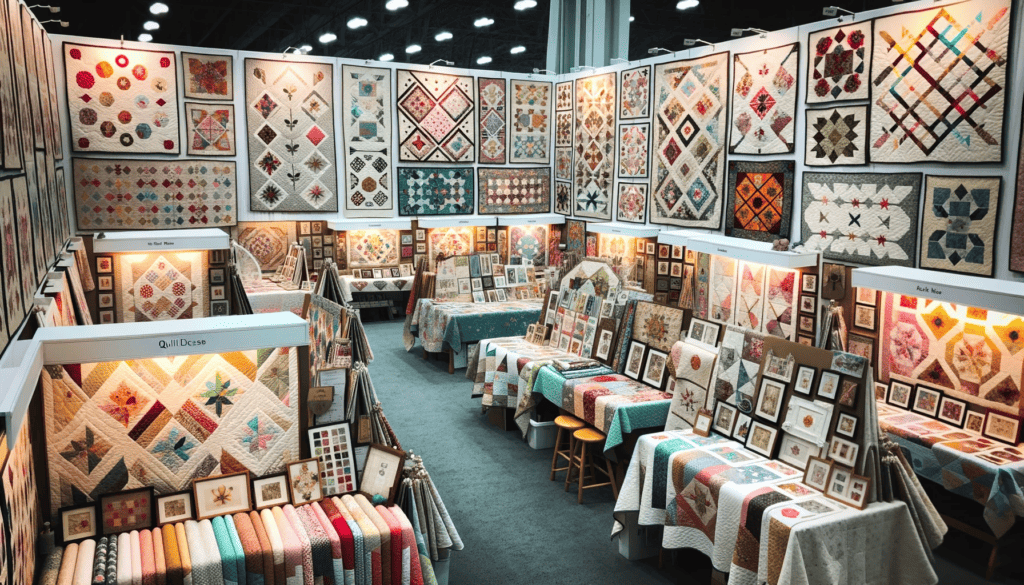
Diversifying Sales Platforms
While Etsy is a great place for crafters and artists to showcase their handmade items, it’s beneficial to consider diversifying sales platforms to reach a broader audience.
Exploring other online platforms can be the key to tapping into different customer bases. Websites like Amazon Handmade and Zibbet offer avenues to sell handmade quilts. Each platform has its own set of benefits, audience, and fee structures.
However, for those looking to have complete control over their brand and sales process, setting up an own website can be a game-changer. With your own site, you can curate the buyer’s journey from start to finish, without competing with other sellers in the same space.
Platforms like Shopify, WooCommerce, or Wix offer user-friendly tools to set up an online shop. While it might require an initial investment in terms of time and perhaps money, the long-term benefits, including saving on transaction fees and building a dedicated customer base, can be substantial.
Yet, it’s essential to strike a good balance. Etsy’s established reputation and vast user base mean it shouldn’t be abandoned altogether. Instead, consider it as one of the many tools in your sales arsenal.
Engaging with the Quilting Community
The world of quilting is vast and rich in history, tradition, and community. Engaging with this community can offer not only sales opportunities but also learning and growth. Building connections with local quilt shops can lead to consignment opportunities or even collaborative events. These local stores can provide a platform to showcase your quilts to a community that already appreciates the craft.
Furthermore, the digital age offers numerous ways to connect with fellow quilters from around the world. Joining Facebook groups dedicated to quilting can be a great way to share your work, gather feedback, and learn about the latest trends and techniques. Many of these groups also offer avenues to sell or trade quilts, providing another sales channel.
Lastly, consider forming community partnerships. Organizations like the Souls Grown Deep Foundation work towards promoting artists from the African American South, including the renowned Gee’s Bend quilters. Collaborating or aligning with such groups can provide a platform to showcase your work, learn from the best, and contribute to the broader community.
In essence, while Etsy offers a fantastic starting point, the world beyond is filled with opportunities waiting to be explored by passionate quilters looking to expand their reach.
Embracing the Craft: The Future of Handmade Quilting on Etsy
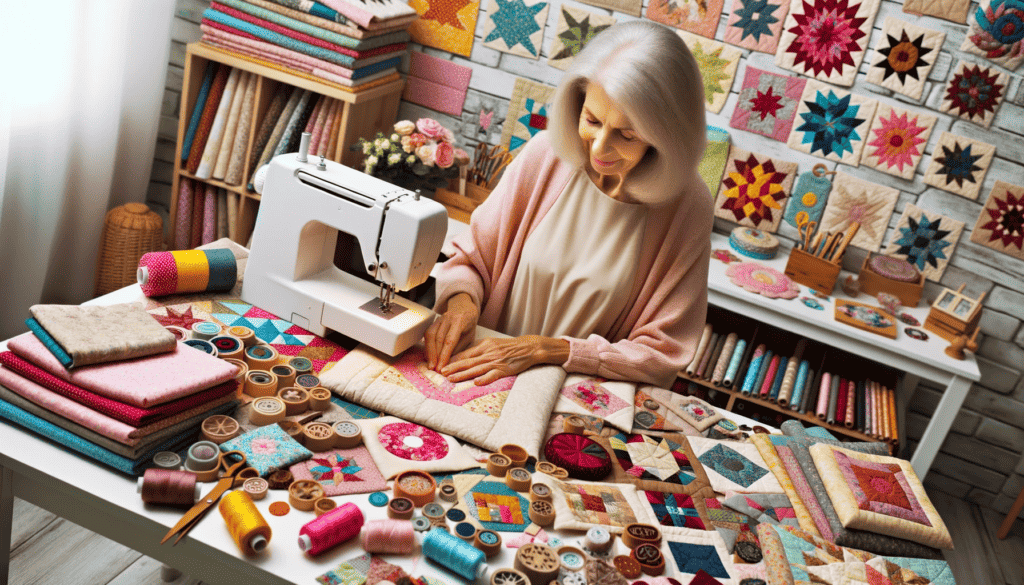
The art of quilting is a timeless craft, intertwined with history, tradition, and passion. Today, platforms like Etsy have opened up avenues for quilters to share their handmade goods with a global audience. Embracing this potential, especially in a world where uniqueness and quality are highly sought after, is an opportunity every quilter should consider.
Crafting a handmade quilt is more than just sewing pieces of fabric together. It’s about telling a story, sharing a piece of oneself, and creating something that can be cherished for generations. This intrinsic value is what sets handmade quilts apart from mass-produced counterparts found in big box stores. When a customer purchases a handmade quilt, they’re investing in craftsmanship, dedication, and the unique story behind each quilt.
The importance of customer engagement cannot be stressed enough. In the world of e-commerce, building trust, fostering loyalty, and ensuring satisfaction are paramount. From the initial stages of showcasing a quilt on social media to the final steps of delivering exceptional customer service, every interaction matters. It’s these small touches, combined with the inherent quality of a handmade quilt, that can transform a one-time buyer into a lifelong customer.
While traditional methods of quilting, passed down through generations, hold immense value and should be preserved, it’s equally essential to embrace modern methods. Leveraging online platforms, engaging with the digital quilting community, and utilizing tools like search engine optimization can elevate your quilting business to new heights.
In closing, the journey of selling handmade quilts on Etsy, or any platform, is one filled with learning, growth, and endless possibilities. With a focus on quality, uniqueness, and genuine customer engagement, success is not just a possibility; it’s a promise. As you tread this path, remember to cherish the art, value the craft, and above all, share the beauty and warmth of quilting with the world.
FAQS
- What sets Etsy apart from other online platforms for selling quilts?
- Etsy is a specialized marketplace for handmade and vintage items, with a community that appreciates and seeks out unique craftsmanship. Its user-friendly interface, dedicated customer base, and tools tailored for artisans make it an ideal platform for selling handmade quilts.
- How often should I update my Etsy shop listings to maintain visibility?
- Regular updates, even if minor, signal activity to Etsy’s algorithm. It’s recommended to refresh your listings or add new products every few weeks. Regularly reviewing and updating your SEO keywords can also improve visibility.
- Is it worth investing in Etsy Ads for my quilting business?
- Etsy Ads can increase the visibility of your listings, especially for new shops or during peak shopping seasons. However, it’s essential to monitor your ad spend and adjust based on the return on investment. Start with a small budget and analyze the results to determine if it’s beneficial for your shop.
- How can I ensure my quilts stand out in a saturated market?
- Focus on what makes your quilts unique, whether it’s a specific technique, design, or story behind them. High-quality photographs, engaging product descriptions, and active engagement with potential customers through social media and community events can also help differentiate your products.
I’m Jackie, the heart behind Marketing and Heart, and since 2011, I’ve turned my passion for creating handcrafted Pagan jewelry into a successful six-figure business. I’m on a mission to empower other artisans to build their dream businesses by sharing the insights and tactics that have worked for me. When I’m not working, you’ll find me enjoying nature, foraging for mushrooms, or spending quality time with my family and my chickens, never too far from my beloved collection of jewelry tools.

Finally! A Proven Way To Actually Grow Your Audience Of True Fans Without Making Social Media A Full Time Job


